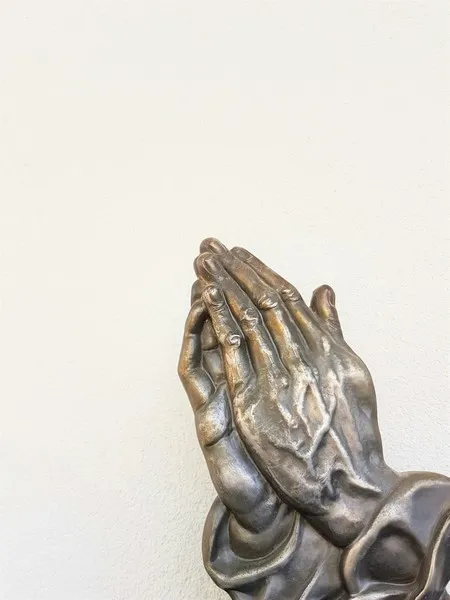Table of Contents
- Introduction
- Historical Context
- Contemporary Debates on LGBTQ+ Inclusion
- Implications for Religious Identity
- Social Cohesion in Church Communities
- Role of Leadership and Congregation Members
- Looking Forward
- Conclusion
Introduction
Churches and religious institutions have long served as cornerstones of social identity, collective meaning-making, and moral regulation. In contemporary society, the question of LGBTQ+ inclusion within various church communities has become increasingly visible and contested. Debates around same-sex marriage, the ordination of LGBTQ+ clergy, and other forms of institutional recognition can serve as flashpoints that reveal broader tensions around religious identity, social norms, and cultural values. At the same time, these debates also highlight the potential of religious communities to become spaces of inclusive solidarity and social support. From a sociological standpoint, it is illuminating to consider the complexities behind how different church traditions engage with LGBTQ+ communities and what that means for social cohesion, group identity, and the evolution of religious institutions. Understanding the interplay between tradition, doctrinal interpretation, and individual experiences helps illustrate the diverse range of church responses, spanning from full acceptance to unequivocal rejection.
Historical Context
The role of the church in shaping attitudes towards LGBTQ+ individuals is deeply rooted in historical processes. In many societies, traditional Christian doctrinal interpretations have often positioned non-heteronormative identities as deviant or incompatible with religious teachings. Over time, social movements advocating civil rights, individual freedoms, and greater awareness of diversity have pressured churches to re-examine long-standing doctrines. While some denominations have become more inclusive, others remain steadfast in their conservatism, reflecting how religious institutions are not static but are shaped by both internal theological debates and external social pressures.
Gradual shifts in societal attitudes frequently mirror theological evolutions. In some cases, churches have sought to reconcile biblical literalism with emerging understandings of human sexuality. This has involved complex re-readings of scripture, often questioning whether certain passages historically used to condemn same-sex relationships might have been interpreted out of context. However, resistance has also been significant, with conservative factions citing centuries of church tradition as justification for maintaining existing stances. This schism underscores the complex interplay between tradition, authority, and social change—a dynamic that continues to influence how churches and congregations approach the topic of LGBTQ+ inclusion.
Societal Shifts
- Sexual Revolution: The cultural transformations of the 1960s and 1970s challenged conventional norms around gender and sexuality, thereby setting the stage for more open discussions within religious communities. This shift paved the way for new forms of personal expression and identity formation that, in turn, began to intersect with religious belief systems.
- Civil Rights Era: The push for broader civil rights brought issues of discrimination to the forefront of public consciousness, creating a momentum for marginalized groups, including LGBTQ+ individuals, to demand recognition and inclusion. Church communities were thus compelled to confront the moral and ethical dimensions of exclusionary doctrines.
- Legal and Policy Changes: Over the past few decades, legislative reforms such as marriage equality in numerous countries have forced churches to grapple with shifting societal norms in real time. This has led to internal debates within denominations over whether to perform same-sex marriages and whether LGBTQ+ individuals should hold leadership positions, reflecting broader struggles over theological authority and social acceptance.
Contemporary Debates on LGBTQ+ Inclusion
In contemporary church communities, the question of LGBTQ+ inclusion can manifest in several ways, each carrying different implications for the shape and function of religious identity. While some churches actively welcome LGBTQ+ people, others adopt a more conditional acceptance, and still others overtly reject non-heteronormative identities altogether. These debates often highlight the tension between adherence to tradition and adaptation to current social realities.
Inclusive Churches
Some Christian denominations and congregations have made concerted efforts to embrace LGBTQ+ members and leaders. These inclusive communities typically view the biblical texts through a lens that emphasizes universal love and social justice. The theology in these contexts prioritizes compassion and egalitarian values, often incorporating updated biblical scholarship that questions traditional interpretations condemning same-sex relationships. The notion of radical hospitality—welcoming all people without exception—has become a guiding principle in these settings.
- Examples of Inclusion:
- The ordination of LGBTQ+ clergy who openly identify and serve as role models for inclusivity.
- Performance of same-sex marriage ceremonies, reaffirming the sacredness of all loving unions.
- Adoption of official statements affirming LGBTQ+ rights and dignity, which can serve as foundational guidelines for how congregations engage in pastoral care and community outreach.
From a sociological perspective, these inclusive stances serve to reshape community boundaries, allowing for broader participation in religious life. By affirming diverse identities, these churches can create spaces of belonging and can potentially strengthen communal ties by emphasizing a shared commitment to social justice. However, this inclusivity can also lead to tensions with more conservative sectors of the same denomination, reflecting the broader struggles around change and continuity within religious institutions. Conflicts may arise over funding, control of church assets, and the interpretation of core doctrines, illustrating how debates over LGBTQ+ inclusion often become microcosms of broader theological and social disagreements.
Conservative Responses
Many churches maintain conservative doctrines that espouse traditional views of gender and sexuality. These congregations often interpret religious texts in ways that uphold heterosexual marriage as the only acceptable form of union. Their stance toward LGBTQ+ individuals can vary from welcoming but disapproving of non-heteronormative behaviors, to outright rejection and attempts at conversion therapies. In some settings, LGBTQ+ individuals may be allowed to attend services but be denied leadership roles or sacramental participation.
- Rationale for Conservatism:
- A belief that scripture provides timeless moral mandates which should not be diluted by contemporary societal changes.
- Concerns about preserving family structures as defined by heteronormativity, emphasizing the procreative aspect of marriage as central to Christian doctrine.
- A fear that changing doctrines on sexuality could erode the church’s moral authority, leading to what some perceive as a slippery slope of further doctrinal compromises.
These attitudes can create social barriers for LGBTQ+ members or potential members, reducing the diversity and inclusivity within these congregations. Sociologically, churches that remain staunchly conservative may face internal conflicts as younger or more socially progressive members push for change. The friction that arises can lead to schisms, departures, or significant debates that challenge the cohesion of the community. In many cases, such churches find themselves at odds with the broader cultural shifts toward acceptance, which can either galvanize their conservative identity or prompt reevaluations of their doctrinal positions over time.
Middle Ground Approaches
An emerging phenomenon is the attempt by certain congregations to occupy a middle ground. They may refrain from officially endorsing same-sex marriage or LGBTQ+ ordination, while simultaneously not enforcing strict exclusions. These churches often claim a desire to “love the sinner but hate the sin,” aiming to maintain unity among a diverse membership.
- Features of Middle Ground Approaches:
- Quiet acceptance of LGBTQ+ members as long as they remain discreet, creating a don’t-ask-don’t-tell atmosphere that avoids public conflict.
- Discussion groups or study sessions that explore the topic from multiple theological viewpoints, without arriving at a definitive stance.
- Delayed or partial adoption of inclusive policies, sometimes contingent on further denominational guidance or internal consensus-building efforts.
From a sociological standpoint, these approaches highlight how institutions navigate controversial issues by maintaining a veneer of unity. However, the middle ground can also breed ambiguity and stress, as LGBTQ+ individuals may still feel marginalized or uncertain about their standing within the community. Furthermore, lack of clear policy can lead to inconsistent practices across different congregations within the same denomination, potentially resulting in confusion or disillusionment among congregants who yearn for clarity.
Implications for Religious Identity
Get the full article AD FREE. Join now for full access to all premium articles.
View Plans & Subscribe Already a member? Log in.





